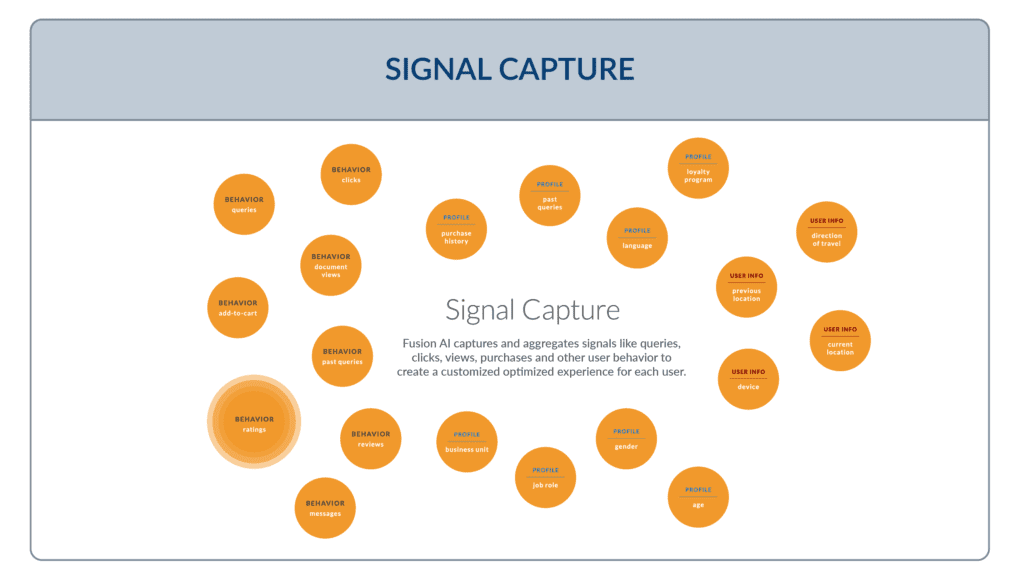Lenovo and New Pig Embrace User Intent
As the greater world of search goes, so goes ecommerce search, and retailers can’t afford to fall behind as consumers change the way they look for products online.
Major search engines, led by Google, rely on artificial intelligence (AI) to extract a user’s intent in a search. Keywords has been one of the signals, or actions, AI uses to figure out what people wanted to find. However, because of the increased adoption of voice control by consumers in their homes, cars, and mobile devices, searchers are increasingly writing queries in conversational language. (See companion story, “Focus on Keywords Fades as Consumer Habits Shift.”)
“Search has gone from producing relevant results based on term matching, what we usually call keywords, to intent matching,” said Michael Cizmar, president, founder and managing director of MC+A, a consulting company that specializes in enterprise search, data analytics, and information management.
Intent, simply put, is the objective of a search. Technology has advanced to the point where searchers no longer need to type keywords to convey their intent. AI can take a user’s actions and compare them to the data gathered from millions of other searches and direct the searcher to the result that is statistically most likely to fulfill a query.
To deduce a searcher’s intent, AI uses signals. A signal is any action a searcher takes, such as the search terms they type in, autocomplete threads they select, results they click on, filters they use, products they add to their carts (add-to-cart), and purchases they make. Signals also include less-desirable actions, such as abandoned searches, null searches, abandoned carts, and exits. Certain user characteristics, such as their device or geo-targeted location, are also signals.

With machine learning and deep learning, a search platform such as Lucidworks Fusion is able to interpret the intent of a given search because it has been trained by processing vast numbers of signals from billions of searches, including those on ecommerce sites.
Lucidworks recently spoke exclusively to two customers actively engaged in ecommerce — John McQuade, director of software development at New Pig, and Marc Desormeau, product owner for site search and product data optimization at Lenovo.com — about how Lucidworks Fusion has helped them elicit intent and improve their shoppers’ search experience.
New Pig Leads Visitors to Solutions, Not Products

New Pig operates an ecommerce site for selling its industrial absorbents. “As we say, we make the world’s best stuff for leaks, drips, and spills,” MacQuade said in a video interview. New Pig has been using Lucidworks Fusion for about five years.
New Pig site visitors increasingly are using natural language in their searches. “Our users are starting to search for solutions; they’re not looking for products anymore. “We’re getting a lot more sentences like, ‘I need a mat that absorbs diesel fuel,’” McQuade said.
At about 2,500 products, New Pig’s product catalog is relatively small for an ecommerce site but “the complexity in our catalog is the dictionary and the terms used in the industrial absorbents industry. We have a lot of difficulty with that,” he noted. “For new customers, especially, it’s critical that they find their products quickly. If they don’t know us, or know our products, we have to get the user engaged as quickly as possible so they don’t leave the site,” McQuade observed.
Lucidworks Fusion can handle common retail queries “out of the box,” Cizmar said. For a specialized site such as New Pig, the system must be given additional training. This is accomplished by directing a data feed into the engine and telling the system the desired outcome, such as a click, an add-to-cart, or a purchase. “Because the data scientists and engineers at Lucidworks have done the hard work of developing the algorithm, the system can use New Pig’s data to tune itself,” Cizmar added.
With signals, rather than keywords, guiding users to the products they want to find, New Pig’s merchandisers are free to use whatever language they think best describes their items without affecting the search experience. “There are a lot of nuances in this industry, and the merchants provide that expertise, but that knowledge doesn’t necessarily translate into how a searcher is thinking,” Cizmar explained. “When AI is directing a search based on intent, that problem goes away.”
“Fusion allows us to quickly analyze user behaviors, find problem searches, and quickly use the query pipelines to fix those in a meaningful way,” McQuade said. “Search has changed quite a bit with AI and machine learning coming along and providing a lot more personalization. Users are seeing that on B2C sites, and they expect the same shopping experience in B2B.”
Lenovo.com Boosts Customer Satisfaction and Revenue

Desormeau presented with Lucidworks at an educational session at the National Retail Federation’s Big Show in January. (See the video here.) He leads Lenovo.com’s global search team, which is a fairly new function at the company.
“Historically, we looked at search as the little box that sits in the corner of the website, and we were trying to just make sure that it worked,” he said. That entailed “trying to structure data in a way that would match the perceived goal of the customer in manual ways using keywords. That was very time consuming and fraught with errors, and it very quickly became unmanageable in terms of the scale.”
When he started building out a formal search practice, Desormeau had two major challenges. One was massive scale. Lenovo sells a wide range of products, from tablets, laptops, and accessories for consumers to servers for enterprise data centers. It is also a manufacturer and a major provider of technology consulting services. The second was data quality and hygiene. A $50 billion company operating in 130 markets around the world, Lenovo has a distributed management structure that was mirrored in the lack of consistency and varying quality of data across the organization.
To solve those challenges, Desormeau decided “using signals was the number one thing we had to do.
By adopting signals very quickly, we were able to offset a lot of the quality issues by using customers to start telling us what they feel is important.”
With Fusion, Desormeau and his team are able to shape the customer experience “in real time to respond to search results, navigation preferences, and other interactions and to start presenting products that are in line with what our customers actually want, which is not necessarily what we think they want,” he said.
“Since implementing signals, we have seen a 30-point increase in customer satisfaction, which is one of our compensation metrics, so that’s a very key metric to show that we’re headed in the right direction,” Desormeau pointed out. “We’ve seen substantial growth in click-through-rate, reduced abandonment rate, reduced exit rate, and improved ranking in terms of our overall metrics.”
Noting that “we’re now on year three of this journey,” Desormeau said “our revenue contribution from search grew 95 percent year-over-year the first year,” which he sees as “a recognition that we really needed to get on a more coherent platform. Year two, we saw 47 percent growth year-over-year, and we’re on track this year for 30 percent growth. Clearly the foundation is working. Customers are finding what they’re looking for.”
Desormeau has also seen a personal benefit. “The number of complaints I’ve gotten from our internal executives has dropped significantly,” he noted.
Looking forward, “as we start analyzing the data, we can start making associations with certain triggers and certain data points, and then we can start influencing the behavior by setting up rules and configurations,” Desormeau said.
“The beauty of it is that it’s not a one-time thing, it’s a learning model.”
Download our ebook today to explore how companies with advanced personalization features understand user intent. Plus, learn how you can use the same techniques to boost sales and improve customer loyalty.